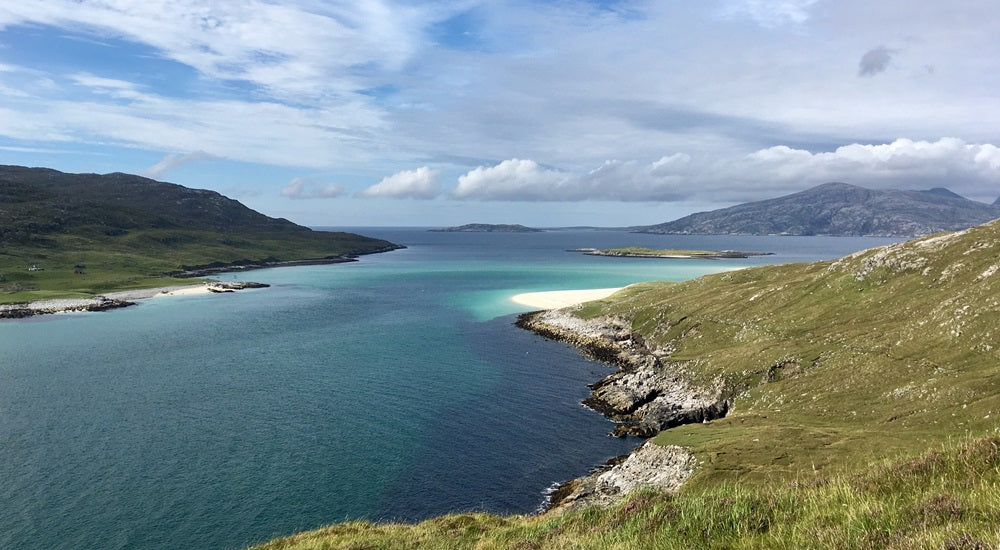
HAND-WOVEN IN THE OUTER HEBRIDES
HARRIS TWEED
Authentic Harris Tweed Heritage Range
The Harris Tweed Act 1993 enshrines in law that every metre of Harris Tweed will conform to exacting standards and adhere to the legal definition of Harris Tweed.
Where you see the Orb mark, you are guaranteed the cloth is authentically produced as outlined by the Act.
We are proud to use authentic Harris Tweed in our Heritage range.
THE ISLE OF HARRIS
The islanders of Lewis, Harris, Uist and Barra had long been recognised for the excellence of their weaving. However, up until the middle of the nineteenth century, their cloth was used only on their crofts or sold at local markets.
In 1846, Lady Dunmore, widow of the landowner of Harris, the Earl of Dunmore, had the clan tartan replicated by Harris weavers in tweed. The results proved so successful that she began to devote much time and effort to marketing the tweed to her wealthy friends further afield.
As a result, sales of the island cloth were soon established with merchants across the country.


HISTORY
The islanders of Lewis, Harris, Uist and Barra had long been recognised for the excellence of their weaving. However, up until the middle of the nineteenth century, their cloth was used only on their crofts or sold at local markets.
In 1846, Lady Dunmore, widow of the landowner of Harris, the Earl of Dunmore, had the clan tartan replicated by Harris weavers in tweed. The results proved so successful that she began to devote much time and effort to marketing the tweed to her wealthy friends further afield.
As a result, sales of the island cloth were soon established with merchants across the country.
THE TRADEMARK
Harris Tweed became sought after in the highest social circles and, across the Outer Hebrides, weavers began contributing to the rising demand. Between 1903 and 1906 the tweed-making industry was in full swing and, in Lewis, carding and spinning mills were built to meet ever-increasing orders. With tweed gaining popularity it became clear that steps were needed to protect the good name of Harris Tweed cloth from imitations.
A meeting was held in Stornoway in 1906 to discuss a system whereby the tweed was inspected and, if passed, given a certifying stamp that would give confidence to the trade and public. In 1909, The Harris Tweed Association Limited was formed to register the famous Orb and Maltese Cross with the words Harris Tweed underneath as a trademark. This certification mark was registered in 1910 and stamping began in 1911.
In 1934, the trademark definition was altered to allow the use of island millspun yarn in addition to handspun, enabling the industry to make a huge leap in production. The stamped yardage increased tenfold and continued to increase till the peak figure of 7.6 million yards was reached in 1966.




